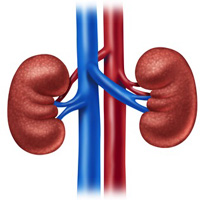Comparison of semirigid ureteroscopy, flexible ureteroscopy, and shock wave lithotripsy for initial treatment of 11-20 mm proximal ureteral stones

Submitted: July 28, 2019
Accepted: November 22, 2019
Published: April 6, 2020
Accepted: November 22, 2019
Abstract Views: 1850
PDF: 1084
Publisher's note
All claims expressed in this article are solely those of the authors and do not necessarily represent those of their affiliated organizations, or those of the publisher, the editors and the reviewers. Any product that may be evaluated in this article or claim that may be made by its manufacturer is not guaranteed or endorsed by the publisher.
All claims expressed in this article are solely those of the authors and do not necessarily represent those of their affiliated organizations, or those of the publisher, the editors and the reviewers. Any product that may be evaluated in this article or claim that may be made by its manufacturer is not guaranteed or endorsed by the publisher.
Similar Articles
- Senol Adanur, Tevfik Ziypak, Fevzi Bedir, Turgut Yapanoglu, Hasan Riza Aydın, Mehmet Yılmaz, Mehmet Aksoy, Isa Ozbey, Ureteroscopy and holmium laser lithotripsy: Is this procedure safe in pregnant women with ureteral stones at different locations? , Archivio Italiano di Urologia e Andrologia: Vol. 86 No. 2 (2014)
- Roberto Giulianelli, Barbara Cristina Gentile, Giorgio Vincenti, Luca Mavilla, Luca Albanesi, Francesco Attisani, Gabriella Mirabile, Francesco Pisanti, Manlio Schettini, Low-cost semirigid ureteroscopy is effective for ureteral stones: Experience of a single high volume center , Archivio Italiano di Urologia e Andrologia: Vol. 86 No. 2 (2014)
- Mohanarangam Thangavelu, Mohamed Yehia Abdallah, Olubenga John Isola, Ahmed Kotb, Management of encrusted ureteral stents: Two center experience , Archivio Italiano di Urologia e Andrologia: Vol. 94 No. 3 (2022)
- Cuneyd Sevinc, Muhsin Balaban, Orkunt Ozkaptan, Ugur Yucetas, Tahir Karadeniz, The management of total avulsion of the ureter from both ends: Our experience and literature review , Archivio Italiano di Urologia e Andrologia: Vol. 88 No. 2 (2016)
You may also start an advanced similarity search for this article.

 https://doi.org/10.4081/aiua.2020.1.39
https://doi.org/10.4081/aiua.2020.1.39



